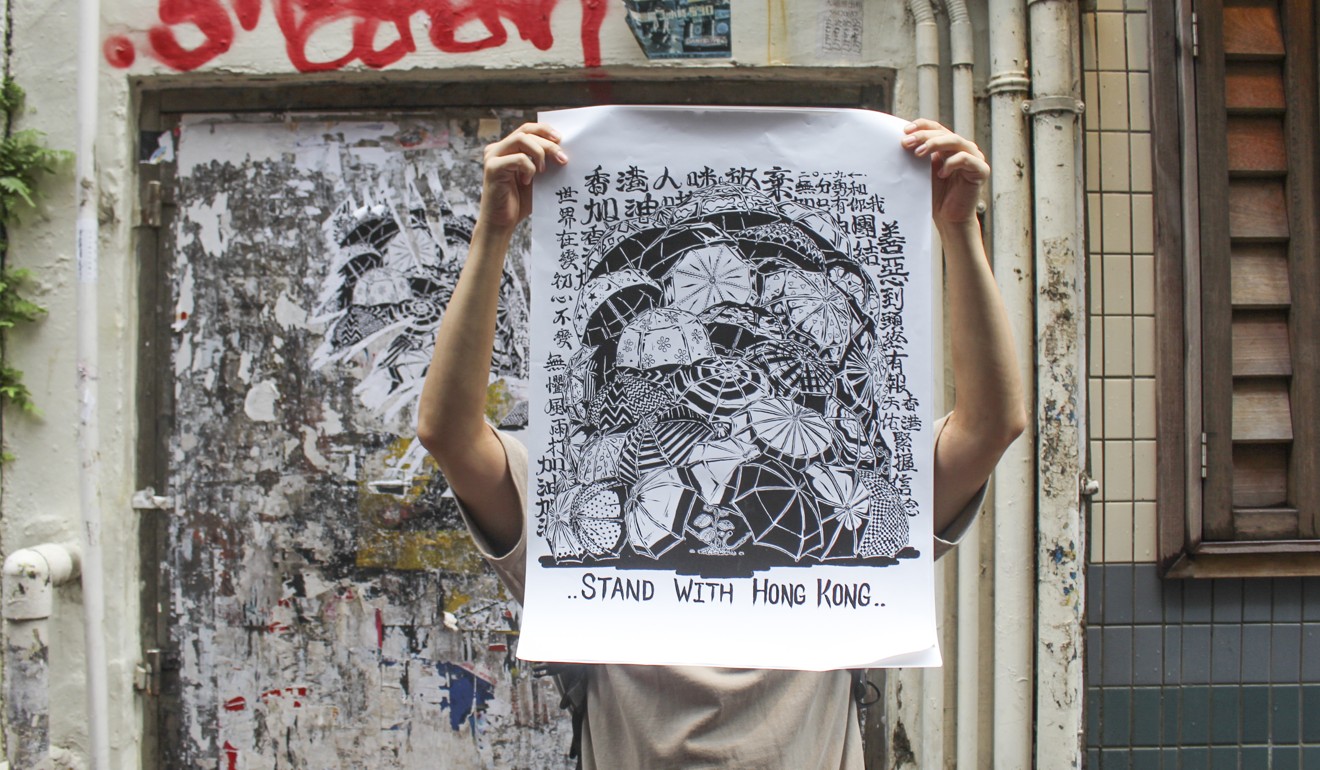
What Hong Kong’s protests mean for the city’s art market: an upsurge in creativity amid economic woes
- While professionals on the international circuit express concern about Hong Kong’s art market, the protests have generated a range of creative output
- How these art works can be preserved and how the creativity behind them can be channelled is worth considering
At the Foire Internationale d’Art Contemporain (FIAC), the international contemporary art fair held in Paris in October, I was surprised to find Hong Kong being avidly discussed. Gallerists and collectors expressed concern over the ongoing protests.
I found myself at the receiving end of questions, ranging from the escalation of violence by both the police and protesters to why it took Chief Executive Carrie Lam Cheng Yuet-ngor months to withdraw the extradition bill that sparked the protests and why she has not addressed protesters’ other demands since then.
Another wondered what impact the protests would have on sales, given that the Asia Contemporary Art Show, one of the region’s longest-running hotel art fairs, had announced the cancellation of its spring 2020 edition amid a 40 per cent drop in attendance and a decline in sales during its October event.

Because the movement is leaderless, those who consider themselves part of it are required to take matters into their own hands, and creativity plays a big role in mobilising people and organising protest activities – from how to deal with tear gas canisters to restaurants printing protest slogans on receipts, and a Halloween parade. Protesters’ innovations will in turn inspire artists, fuelling a cycle of creativity.
Regardless of one’s political stance, the movement is an important chapter in Hong Kong’s creative trajectory. It is also a concrete demonstration of Hongkongers’ creative potential.
Many of those behind protest illustrations and graphics are professionals who do not have the opportunity to shine at work, mostly because they have to follow clients’ orders. The movement has liberated them from these constraints and given them a platform to showcase their talent.
Hong Kong protest art: the nameless collective behind the designs
It’s worth considering how best to harness the wealth of creativity the unrest has unleashed, particularly that of the young generation, as well as how to archive and study this creative output. Will organisations take up this task without self-censorship? Freedom of expression, after all, is written into Hong Kong’s Basic Law.
Hei told The Art Newspaper: “This is not the end, this is not doomsday – of the world or of the Hong Kong art world”, adding that the US-China trade war was more responsible than social movements for the economic downturn.

Art Basel Hong Kong: tips on how to invest in art
The present moment is indeed the best and worst of times for Hong Kong’s art scene. One Asian gallerist at FIAC told me she will not pull out from exhibiting at Art Basel next spring. “Coming to Hong Kong is our way to show support for the city,” she said, wrapping my hands in hers.
Vivienne Chow is a journalist and cultural critic based in Hong Kong. She is the founder of Cultural Journalism Campus and a part-time lecturer at the Chinese University of Hong Kong

